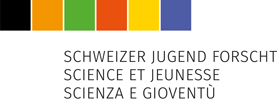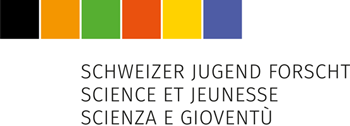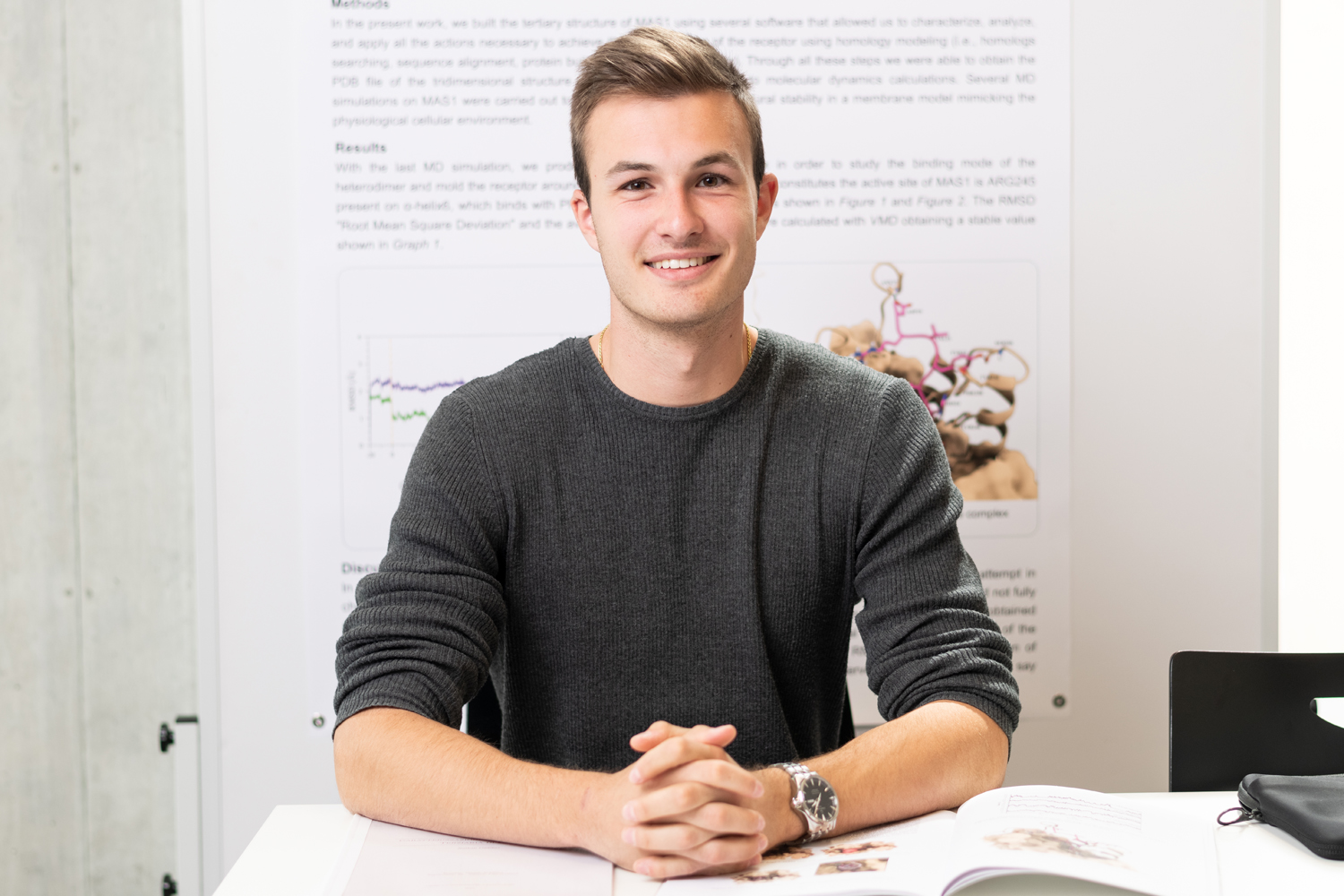Chimica | Biochimica | Medicina
Nathan Oberti, 2003 | S.Antonino, TI
Hyperinflammation is the most severe clinical phase of Covid-19 disease and is characterized by high blood pressure in the lungs, which facilitates microthrombus formation, eventually leading to myocardial ischemia. Studies have revealed how the infection caused by the coronavirus SARS-Cov-2 can unbalance the Renin-Angiotensin System. In particular, the binding of Angiotensin Converting Enzyme 2 (ACE2) by the virus decreases the production of Angiotensin1-7 (Ang1-7) which cannot activate the MAS1 receptor and stabilize the pulmonary blood pressure. This research aims to build by homology modeling the tertiary structure of the MAS1 receptor to allow the identification of possible drugs that can activate this G-Protein Coupled Receptor (GPCR). Identifying a drug would indeed provide the patient a novel tool to fight the disease and thus increase his chances of recovery.
Argomento
The clinical cases of pulmonary hypertension that develop in patients with Covid-19 disease are typically treated with broad-spectrum systemic drugs or palliative therapies in the most severe scenarios. Therefore, it is of great demand to develop treatments that directly reach the source of the problem, as they ensure fewer side effects and perhaps the complete resolution of the failing pathway. This research aims to characterize, by homology modeling, the tertiary structure of the MAS1 receptor to allow the identification of possible drugs that can bind this GPCR. Studies have shown that, to treat the consequences of SARS-Cov-2 infection, it would be possible to administrate directly Ang1-7 for its known vasodilatory property. Thus, developing agonist drug candidates towards MAS1 that mimic the Ang1-7 pharmacological activity, represents a valid drug design strategy. However, the lack of the MAS1 tridimensional structure hampers a rational structure-based drug design approach.
Metodologia
In the present work, we built the tertiary structure of MAS1 using several software that allowed us to characterize, analyze, and apply all the actions necessary to achieve the final structure of the receptor using homology modeling (i.e., homologs searching, sequence alignment, protein building, energy minimization). Through all these steps we were able to obtain the PDB file of the tridimensional structure of MAS1, which underwent to molecular dynamics calculations. Several MD simulations on MAS1 were carried out to assess its energetic and structural stability in a membrane model mimicking the physiological cellular environment.
Risultati
In the MD simulations, we studied the receptor dynamics and further refined the model reaching a final stable structure. In this state, the ligand binding site was occluded by the formation of a salt bridge between GLU167 of helix 4 and ARG245 of helix 6. Therefore, we further refined the model performing a steered MD simulation that simulated the binding of the natural ligand Ang1-7 to MAS1, leading to the active Ang1-7/MAS1 complex. The simulation, which lasted approximately 200ns, was done by applying a decreasing force between the PRO7 of Ang1-7 and the guanidine group of the ARG245. The result allowed us to analyze the binding mode of the ligand/protein complex and in parallel mold MAS1 around the peptide. To check the stability of the structure we computed the RMSD of the Ang1-7 and MAS1 backbone carbon atoms, resulting in a stable value of about 2.4 Angstrom.
Discussione
There are some molecular dynamics simulations that we could not fully analyze due to lack of time; in fact, time was the main limiting factor. In detail, the role of the intraprotein salt bridge between GLU167 and ARG245 in the Ang1-7 binding process is still unclear. In addition, the role of the tryptophan residue present in the extracellular loop 3 (ECL3) during Ang1-7 binding is unclear; however, I hypothesized that it has the function of directing the peptide during its entry into the receptor.
Conclusioni
In conclusion, the prototype complex formed by the Ang1-7 peptide and the GPCR MAS1 represents the first important step towards the characterization of the binding mode between these two molecules. The structure of the complex obtained constitutes a valid starting point for a more thorough study to understand the functional conformational changes of the receptor during the Ang1-7 binding process. Moreover, considering the value of the RMSD and the phenomenon of spontaneous reformation of part of the structure following an external disturbance (observed several times), we can say that the structure has demonstrated a particular degree of stability and resilience.
Valutazione del lavoro espressa dall’esperto
Prof. Dr. Vittorio Limongelli
Il candidato ha focalizzato il suo studio sulla costruzione del modello atomistico tridimensionale di Mas1, recettore coinvolto in patologie cardio-circolatorie, incluso COVID-19, attraverso moderne tecniche computazionali. Ottenuto il modello 3D di Mas1, Nathan ha concluso il suo lavoro studiando l’interazione di legame tra l’agonista endogeno Ang1-7 ed il recettore, identificando le principali interazioni tra il ligando e la proteina, spianando cosí la strada a studi di drug design su questo target nel prossimo futuro con prevedibile impatto sanitario, sociale ed economico.
Menzione:
eccellente
Sonderpreis Gebauer Stiftung – Regeneron International Science and Engineering Fair (ISEF)
Liceo cantonale di Bellinzona
Docente: Prof. Davide Speziga



